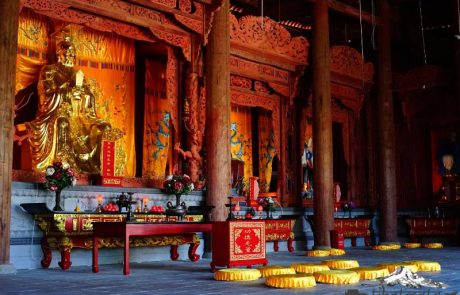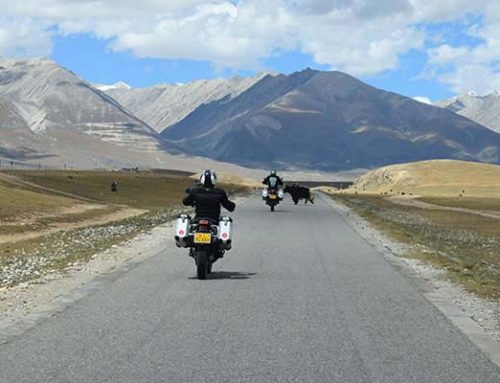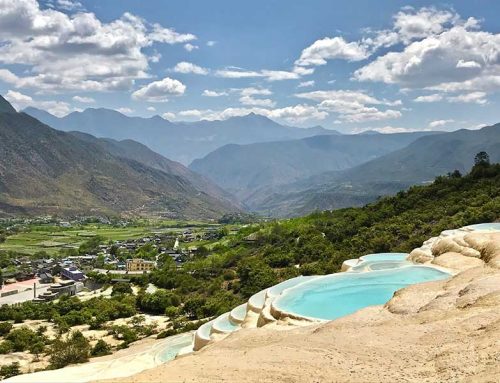Ni hao Dali!
Dali is nicely encircled by mountain ranges on the south, west, and east. The Erhai Lake sits majestically in the center. To the west arises Dalis backyard mountain Malong Feng, which with its 4122m altitude is the highest one
in the region. Dali itself is located about 2000m above sea level. Its natural scenery, cultural and historical heritage as well as thrilling nightlife are rather fetching and inviting. Thus making Dali a must-see tourist destination in Yunnan. Got that!
Dali is a lovely old town having significant relevance in historical China. Located at coordinates 25°36′N 100°16′E, it is on the North-western side of the Yunnan Province; and it is about 186 miles North-western of Kunming.
The climate in Dali is benign and kind with temperatures around 18-21°C for about 126 days in a year. Not bad right? There can be fluctuations in the temperature though, where it may fall to as low as 15°C and be as high as 24°C. But you can handle that. Its climate is mild subtropical and characterized by short and dry winters as well as rainy summers. Dali is an all year-round tourist destination spot, so book your holiday already! The bulk of the year’s rainfall takes place between July and September while December is known for its mild and dry climate with lots of sunshine.
Population:
- Old Town: ca. 40.000
- Region Dali: ca. 3 Millionen
Highlights:
- Old Town
- Cangshan Mountains
- Erhai Lake and its villages
- Three Pagodas
Present Day Dali
Today, the Dali Bai Autonomous Prefecture capital is Dali City. Besides the historical values of Dali, it has several natural picturesque areas especially the famous Erhai Lake and Cangshan Mountain; between which the Three Pagodas of Chongsheng Temple and the Butterfly Spring A lot to see in this area clearly!
For several generations, several ethnic minorities have settled in this area, and the Bai Minority are the majority of the population by about 65%. The integration of these ethnic minorities resulted in various customs that display the daily living of people in the region. The city is brought to life and brightened up by impressive festivals and celebrations every spring. In fact, celebrations like the Butterfly Fest and March Street Festival present an excellent chance to acquaint oneself with the local ethnic customs. Also the Torch Festival of the Yi minority in July is worth seeing, especially in Xizhou So make the most of it whilst you are there.
Dali has remained a link, connecting cultural and commercial communications between ancient China and other countries. Moreover, corroborating the long existence of this destination, are the remains of the Tai He City and the Dali Ancient City (Dali Old Town).
Let’s step back into History
Dali is the heartbeat of the economy and culture of the Dali Bai Autonomous Prefecture. Not less than 25 ethnic minorities reside in this area; therefore, creating rich multicultural integration. Historical facts have revealed that Dali is a destination that is worth visiting owing to its relevance as a seat of power right from the ancient times. The Bai ancestors once lived in this area around the 4th century, and several ethnic groups thrived and created an amazing Neolithic culture. However, in 221 BC, Qing and Han Dynasty commenced its ruling of Dali when it started the development of southwest China and instituted its administrative base there. During the Han Dynasty in 109 BC, the Kunming’s tribes were defeated by the Han Dynasty’s Emperor Wu and created Yeyu County at the present day Dali. Dali was also made the hub on the South Silk Road which is as well called the Tea Horse Road, connecting China with Myanmar and India. Furthermore, the Dali County was rebuilt after the Three Kingdoms (Yunnan, Sichuan, and Guizhou) belonging to Shu Zhuge calmed insurrection. Also, in 597 years during the Sui Dynasty when Kunming started an uprising; Shi Wangsui was ordered by Sui to pacify it. Besides, all counties in Dali were subject to the ruling of Rongzhou Government established by the Tang Dynasty during the years of Tang Shizhen.
In the 7th Century, very close to the Erhai Lake were six tribes referred to as “Zhao.” On the south of the Zhaos was Mengshe and the tribes there called themselves “Nanzhao.” However, the entire Zhaos declared their support for the Tang Dynasty and founded the Nanzhao Regime. There was, however, an internal crisis that tore them apart resulting in the disappearance of the Nanzhao Regime. Established in 937 by Duan Siping, the Kingdom of Dali lasted for three centuries. From 1253 to around 1382, during the Yuan, Ming and Qing Dynasty, Dali was subjugated and rebuilt. It really is amazing that Dali has been significant and relevant to all the powers that have ruled, looking back on its rich history.
Sights and Activities that must be experienced
Dali is known for several memorable and historic antiquities, making it one of the top favorite tourists places to see. These are sights you cannot afford to miss when you visit Dali. Otherwise if you do, rather not tell people you went there. Yes, it’s that big a deal, so add the following to your checklist:
Classic:
1. Houses of Bai People in Xizhou
The Bai people are one of the 25 ethnic minorities in the Yunnan province. The town, Xizhou means “happy town.” These houses are evidence and display the Qing Dynasty Bai architecture in China. Visiting this place gives you a better understanding and appreciation of the history of the creative people. This place alone grounds you and reminds you of the importance of culture in the history of China.
2. Ancient City of Dali
There are several historical sites, antique temples and buildings in this city. Very close to this town is the Erhai Lake and the breathtaking Cangshan Mountain. Now listen to this: really old architectural buildings and temples that are as old as 1,000 years can be seen! Mind blown! You will also come across countless beautiful souvenirs. This City was the seat of power to the Kingdom of Nanzhou around 738 AD. Also, the popular Three Pagodas of Dali are just about one kilometer from the Old Town. This leaves you with no excuses, they are too close to be missed.
3. Three Pagodas
The Three Pagodas are well-known in China due to their beauty, size, and antiquity. They have been preserved for a long time with the middle one being more than 1,100 years old (as mentioned above) and it is among the tallest pagodas in China! Pretty cool right? The pagodas are located between the Erhai Lake and Cangshan Mountain. Again, a skip hop and a jump and you are there.
4. Butterfly Spring
Dieser Park (Hudie Quan 蝴蝶泉) befindet sich am Fuße des Cangshan etwa 20 Kilometer nördlich von Dali. Jedes Jahr zur Frühlingszeit (April, Mai) treffen sich hier tausende von Schmetterlingen verschiedenster Gattungen um sich zu paaren. Es ist und bleibt ein faszinierender Anblick.
5. Shaping Mondaymarket
A really popular market among the locals. It is taking place every Monday in Shaping, a small village on the northern riverside of the Erhai; about 19 miles from Dali.
6. Tianlongbabu Filmstudios
Many popular Chinese TV-Series are being shoot here. It is most popular though for soap opera and Martial-Arts-Movies.
7. Hike through Cangshan-mountain-range
Take about half a day off to go on a hike on the Cloudpath in the Cangshan-moutain-range. The mid-level high route is at 2600m above sea level. Geographically the Cangshan is the southernmost foothill of the Himalaya. Another option is to take the cable-car to the Seven-Dragon-Daugthers-Lake (2600m) or to the Horse-Lavation-Lake (3900m). For advanced mountaineers the hike among the 19 peaks of the mountain-range is awarding. You should calculate a night stop, because the whole peaktrail takes about 11 hours.
8. Lake-village Caicun and a boatride on the Erhai
From the idyllic Caicun towards the small Island Xiao Putuo with the Putuo-Temple from the Ming-Dynasty dragonboats take off. Also Haidong at the opposite riverside is worth a visit.
9. Motorbike Tours
If you are seeking a bit of fun and adventure, you need to go on a Dali motorbike tour. And naturally if you are a lover of the enthralling motorbike world, you will find your Dali experience as one of the most memorable ones that will live with you forever. Travelling right from Dali Old Town to the Three Pagodas, Erhai Lake, Cangshan Mountain, Taihe City Nanzhao, and Shaxi Town, your motorbike ride will be packed with exploration, perfect postcard moments and cultural enrichment.
10. Shaxi Town
This gorgeous trading town is also located at the Tea-Horse-Road. A hike from Shaxi to the Shibao-Shan-Caves is also worth the time.
11. Onward journey to Lijiang, Shangri-La and Tibet
Dali is a very good place to get on the road towards Tibet. By motorcycle or jeep it takes about five hours. The journey brings you to places like Lijiang, Shangri-La and Degen.
Insiders’ tip
1.Bo Ai Lu (博爱路)
This is the most interesting market in Dali. Inside the town walls you will find it in the north-west. Many local specialities like the “stinking tofu” are available there.
2. Mountain graves of the Bai and Muslims
Above the Filmstudios stairs bring you up the the Cloudpath of the Cangshan. Next the the stairs are the old Bai-tombs located. Also you will find a Muslim graveyard. Until the end of the 19th century 31% of the population were Muslim. Those were the Hui- and Panthay-minorities. Even though by now they are far less, some mosques and Muslim restaurants are still situated in Dali.
3. Buddhist Lunch
There is one place in Dali where you find a silent, meditative Lunch for just a small contribution (5-10 Yuan), which is served by Buddhists. Be aware not to speak a single word until the very last rice grain, that is the rule.
4. Zhoucheng near Xizhou
Zhoucheng is also a beautiful Bai-village, but not as touristic as Xizhou. Here the torch-festival is especially pretty.
5. Weishan (巍山)
Today Weishan with its narrow streets and wooden houses is a significant, small village of the Hui- and Yi-minorities. It provides a neat insight in the traditional Chinese everyday life. Weishan is located about 49 miles south of Dali.
6. Hot spring of Putuo
Because Yunnan is situated in a tectonic zone between the Indic and Eurasian Plate, there are many hot springs around Dali. The ones at Putuo are particularly pretty and provide for Body and Mind a special relaxation.
7. Xiaguan
Xiaguan is the new part of Dali, they say among the locals. Located at the southern tip of the Erhai it also has an old Town with splendid stone houses. Both the Tea-Horse-Road and the Burma-Road went through Xiaguan. The Burma-Road was the channel of supply between the British Burma and China whilst the Sino-Japanese-War.
8. Boluo-Temple near Gantong-Temple
If you visit the Gantong-Temple three miles south of Dali you will find on the left hand side a path which will lead you to a smaller one. Monks are living there in a pine-smelling valley full of violet flowers. It is also possible to drive up the path with the motorcycle until about 300 yards away from the temple. Even though there is a gate and a guard you can insist on driving on. The path leads past the temple into nowhere. At the Gantong-Temple also the Cloudpath begins.
9. Hua Dian Ba – High mountain valley of the flowers
Near Xizhou there is a path to the Hua Dian Ba (3000m above sea level). It is only accessible by motorcycle or MTB. In the Valley there is a small village located which runs the steppe with yaks, horses and sheeps. It is a special and isolated place. You will find a guesthouse though, which costs about 80 Yuan.
Dali awaits you!
If you are looking to be entrenched with culture, powerful history, breath taking scenery and riveting motorbike rides, or family friendly activities Dali is your place!
Entrance fees
| Three Pagodas | CNY 121 |
| Cangshan | CNY 40 |
| +Zhonghe-Temple | CNY 60 |
| +Gantong-Temple | CNY 80 |
| Cable car to the middle way (cloud path) (2600m) | One Way: CNY 50/Return: CNY 80 |
| Cable car to Xi Ma Tang (horse washing Pond) (3900m) | CNY 230 (both ways) |
| Boat ride on Erhai lake (3 hours) | CNY 180 |
| Putuo Hot Springs | CNY 80 |










